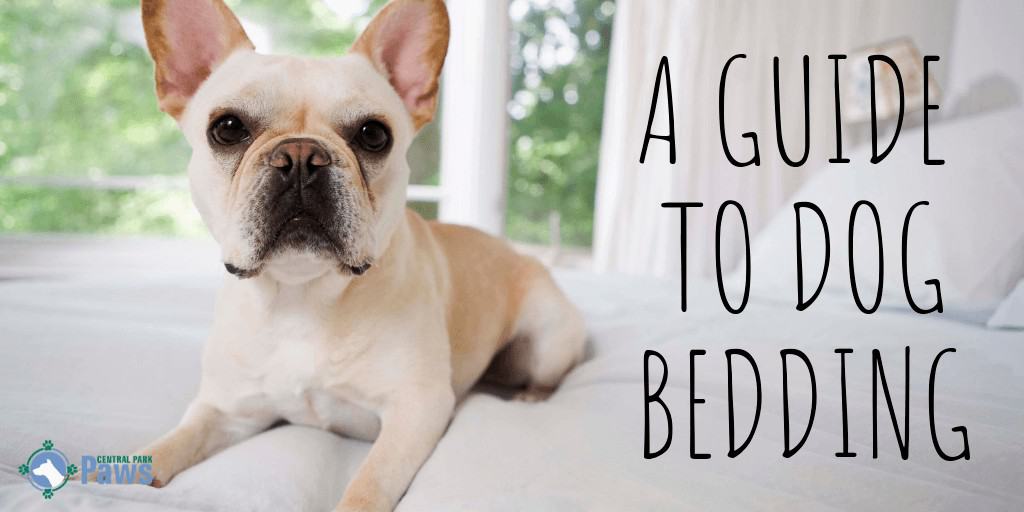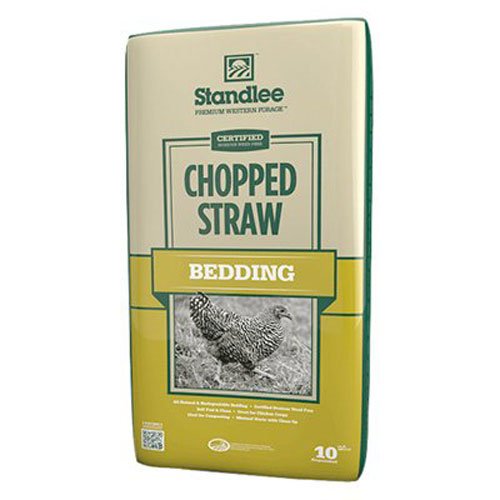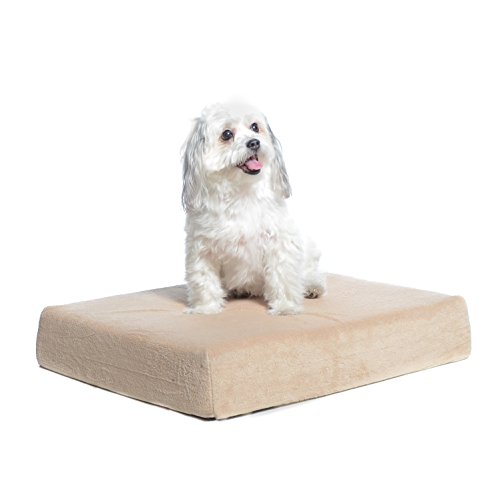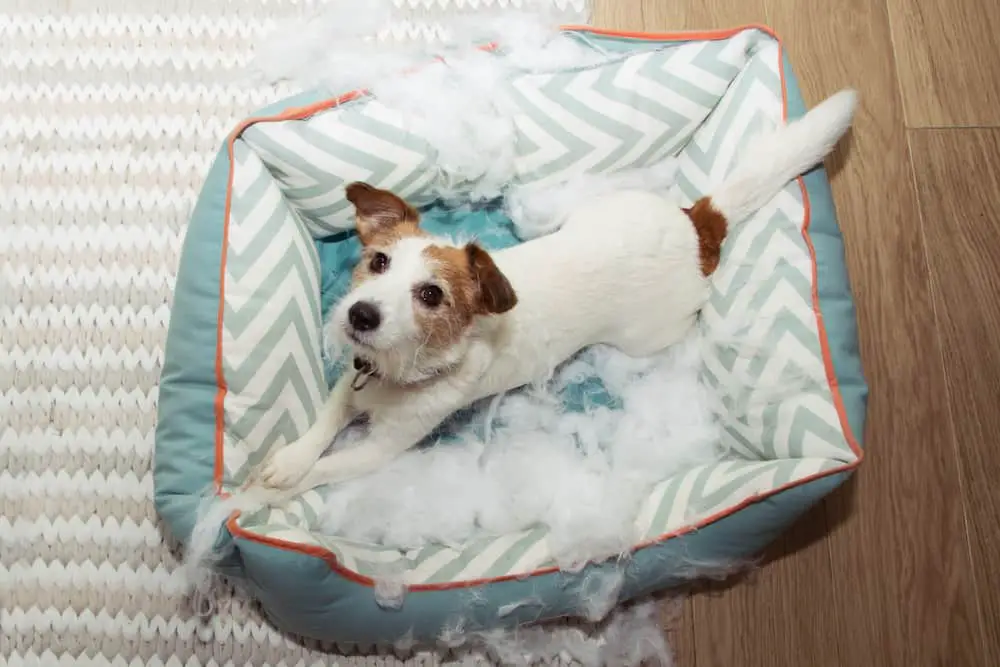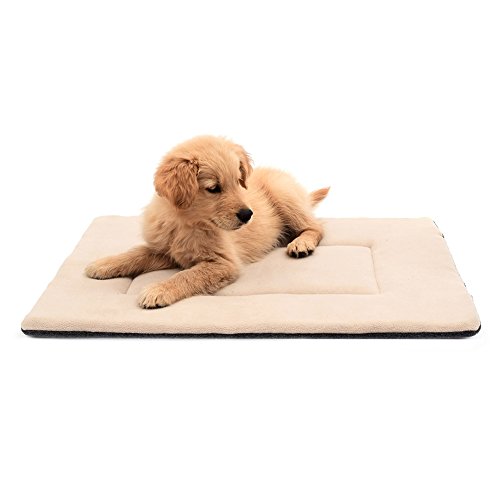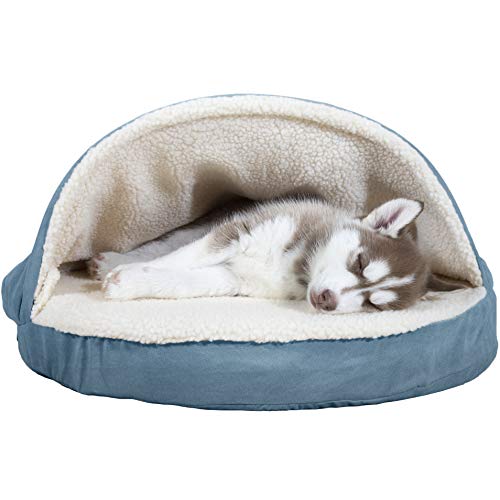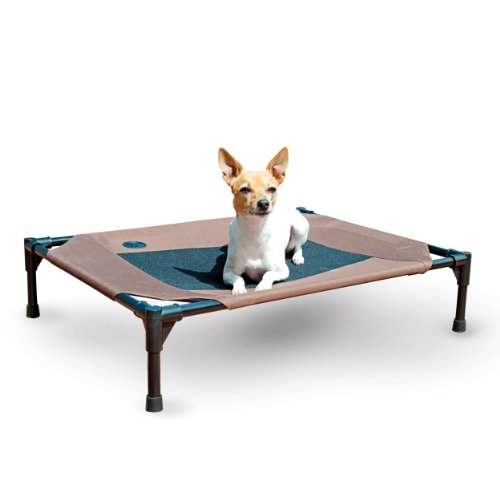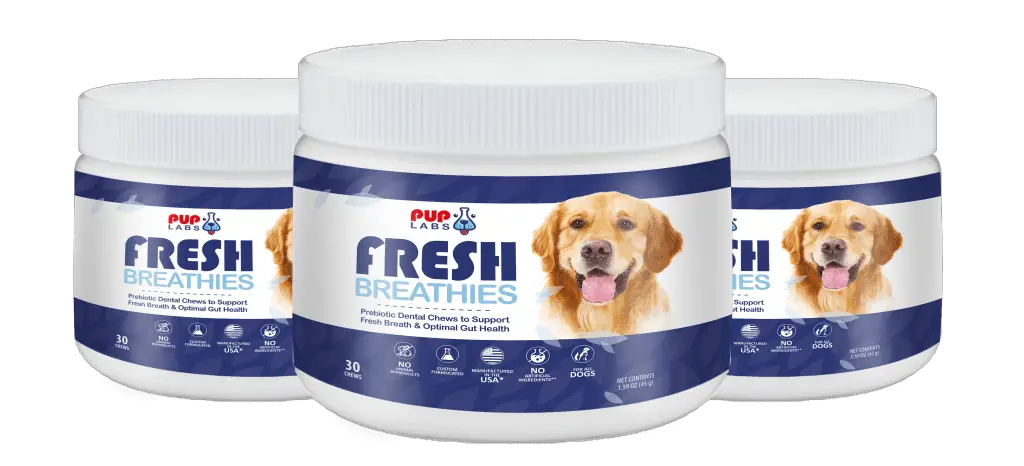She never seemed to mind, but I still wanted her to be more comfortable.
My current dog, Maggie, sleeps wherever she wants to, but a lot of time she prefers the floor.
It’s made me wonder if she’d ever like a dog bed. If she did, I wouldn’t know where to start.
There are so many choices out there!
Especially with the internet being at our fingertips, the dog bed options are endless.
So what’s important to know about dog beds anyway?
Here’s what I’ve learned about all things dog bed and what you can take away to help your pup catch some z’s.
Why Your Dog Needs Bedding
Every dog’s situation is a little different, but I think they could all benefit from some bedding.
It’s like giving them a little extra love.
Your dog may also need some joint or hip support when they sleep on the floor.
Outdoor dogs can also use bedding as a means to keep warm during the night, if they stay in an outdoor kennel.
Types of Bed Filling
There are actually many different kinds of bed filling, which I had no idea about before I started my research.
Turns out, the bed filling is the most important part of the bed, so make sure you get the right kind.
Cedar Chips
I never would have thought that cedar chips could count as dog bedding, but they’re actually amazing.
Cedar chips repel bugs and absorb odor[1], so they’re great if your dog is more of an outdoor dog or has a natural heavier odor.
Hay or Straw
Hay and straw are both used as bedding in outdoor dog kennels[2].
The only difference between the two is that hay becomes moldier at a much faster rate than straw.
Memory Foam
Older dogs often have to have a memory foam dog bed because health concerns like arthritis make it difficult for them to lay on the floor or sleep on hard surfaces.
Polyester Fiber
Polyester fiber is one of the two most commonly found materials in dog beds.
It’s cheap and easy to stuff into any size bedding.
Cotton Batting
The other most commonly found dog bedding material is cotton batting, since it’s just as cheap as polyester fiber.
Types of Bedding
Now that you know all about what dog beds can be filled with, it’s time to learn about the different kinds of beds you can choose from.
Pillow or Cushion
The pillow or cushion dog bed is exactly what it sounds like.
It’s basically a couch cushion or large pillow that your dog gets to sleep on.
This is great for dogs who love to sneak up onto the couch or need to lay on something in their crate.
Bolstered or Donut
Smaller dogs tend to get donut beds, while bigger dogs can enjoy the bolstered bed.
The donut bed is a small, round bed that’s enclosed on all sides.
Bolstered beds have the classic dog bed appearance, with siding on three sides for dogs to rest their heads on.
Nest
Nest beds are similar to donut beds, but can also be more shallow in the middle.
It’s the middle ground between donut and cushion beds.
Puppies who might get stuck in a donut bed or larger dogs would enjoy a nest bed.
Crate Pads
Dogs who spend a lot of time in their crates can get crate pads.
These are meant to fit the size and shape of the crate so your dog is comfy while you’re away.
Orthopedic
Older dogs who struggle with joint issues should get an appropriately sized orthopedic bed.
These beds are much more firm and can even be raised for easy access[3].
Indestructible
No dog bed is entirely indestructible, but dogs that tend to chew should get a bed that’s made with nearly indestructible material.
This usually means that the bed has a tough fabric on the outside that can’t be ripped easily instead of being covered in something fluffy or fuzzy.
Covered
Picture an igloo.
Now picture your dog inside it.
That’s exactly what a covered dog bed looks like.
They’re good for dogs who like to snuggle down or get cold easily.
You’ll know this is right for your dog if you often find them wedged under your comforter or napping under dirty laundry.
Elevated
Elevated dog beds are good for a couple purposes.
If they’re made of a mesh material, they’re a great place for your dog to dry off outside after swimming.
They also help older dogs who may not be able to get down on the floor easily.
Heated
Heated beds are great for dogs who live in places where it’s cold most of the year, even if they live indoors.
Dogs with arthritis would also benefit from a heated bed, since it would soothe any aches and pains after a long day.
Cooled
Beds that stay cool have a specific cooling pad built into them.
They’re what owners typically buy for dogs like the Saint Bernard and Husky.
Dogs with thicker coats will appreciate the extra help cooling off before they fall asleep.
Which is Best?
How can you tell which bed is right for your dog?
Think about your dog’s daily lifestyle, along with these other factors.
For Dog Houses
Indoor dog houses would work well with a cushion dog bed or even a crate pad, depending on the size of the dog house.
Outdoor dog houses could also use these beds, if they’re made of weatherproof material.
For Dog Crates
Crate pads are the best option for dog crates.
While a cushion bed may fit, it could be thick enough that your dog would be prevented from standing up straight.
For Dog Kennel
Since dog kennels are almost always outdoors, hay or straw would be a great material to use as bedding.
Elevated beds would also be a good idea, since it would keep your dog away from any dirt or bugs that get tracked in.
For Big Dogs
Big dogs need something large enough for them to spread out on, which is why the cushion or pillow bed would be best.
A bolstered bed could also be a good idea, as long as it is big enough that the siding doesn’t prevent your dog from sleeping comfortably.
For Small Dogs
Depending on the temperament of the smaller dog, a donut or covered bed could be best.
They both provide the opportunity to burrow down and feel safe in a den.
For Young Dogs
While they’re still being trained, young dogs should get the chance to sleep on an indestructible bed.
After they’ve grown out of their puppy chewing, any other kind of bed could work for them.
For Old Dogs
Health issues are always the top concern for dog parents of older dogs, which is why older dogs should get orthopedic or heated beds.
They’ll help with joint issues and keep older dogs comfy all night long.
Raised beds could also be a good option, if your dog struggles to get off the floor once they’ve laid down.
For Particular Breeds
Different breeds will have different bed needs.
Larger dogs with heavy coats might need extra large, cooling beds.
Smaller dogs with thin coats may prefer a covered bed.
Think about the breed of your dog and their needs to best decide which bed is right for them.
For a Sleeping Style
How does your dog normally sleep?
Are they curled up in a tight ball or spread out on their side?
Their sleeping style is a definite factor when deciding what bed is right for them.
It’ll change the size and shape of what you get.
Conclusion
Even if it’s overwhelming at first, it’s really a good thing that there are so many dog bed options out there.
Your dog should have something personalized to their needs, no matter what age or breed they are.
Think about things like filling, size, shape, and function before you purchase a bed. That will help you find the right one more quickly.

